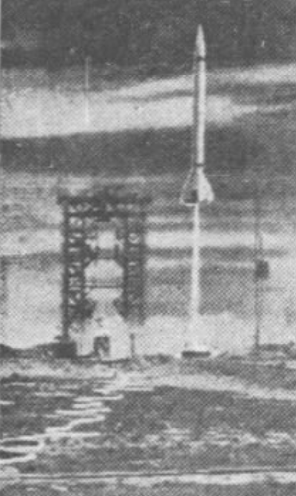
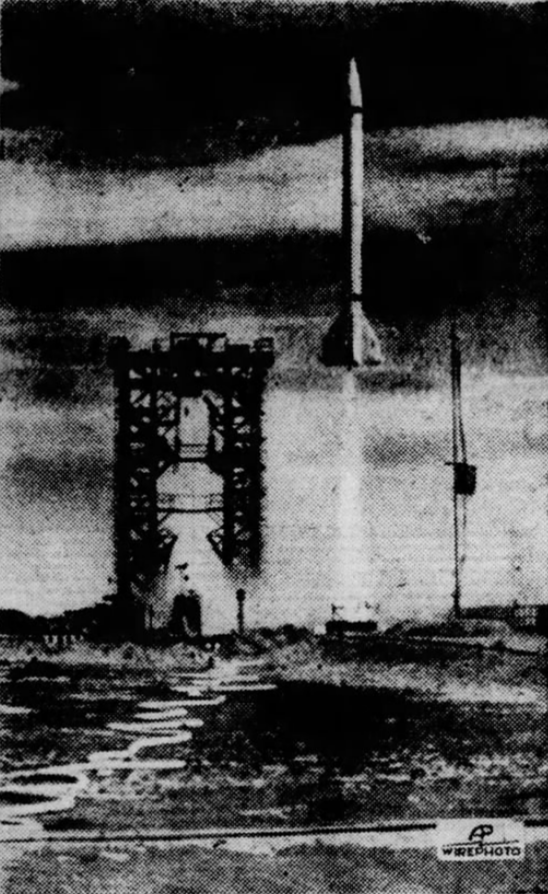
3 May 1949: at 9:14 a.m., Mountain Daylight Saving Time (15:14 UTC), the Viking 1 rocket was launched from the White Sands Proving Grounds in southern New Mexico. The rocket carried a 460 pound (210 kilogram) instrumentation payload.
This was the first launch of a U.S.-designed and -built rocket capable of carrying a payload to space.¹
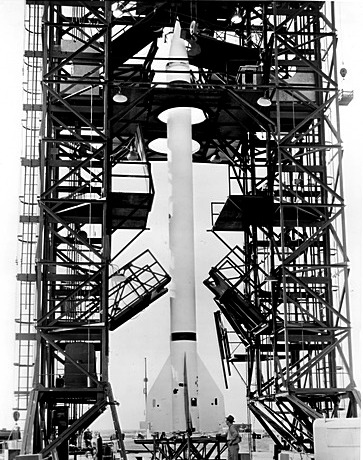
Although the planned engine run time was 65 seconds, Viking 1’s engine shut down after 54.5 seconds. At that time, the rocket had reached a speed of 2,350 miles per hour (3,780 kilometers per hour). After the engine shut down, Viking 1 continued to climb on a ballistic trajectory to an altitude of 50 miles (81 kilometers). As it fell back to Earth, 291 seconds after launch, the rocket broke up and was scattered across many miles of the Proving Grounds.
Viking 1 was a single-stage liquid-fueled rocket. It was built by the Glenn L. Martin Company for the Naval Research Laboratory. It was constructed primarily of aluminum. The skin was rolled into a cylinder and welded. It was 47 feet, 7.5 inches (14.516 meters) long, 2 feet, 8 inches (0.813 meters) in diameter, with a fin span of 9 feet, 2.5 inches (2.807 meters). Each fin had an area of 15 square feet (1.39 square meters). The rocket had a gross weight of 10,824 pounds (4,910 kilograms).
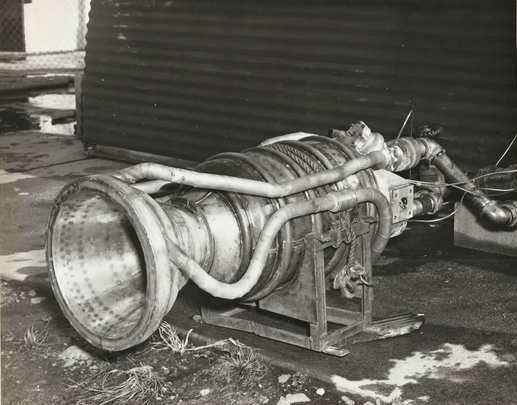
Viking 1 was powered by a Reaction Motors Inc. XLR10-RM-2 engine. It’s propellant was a mixture of ethanol and water, mixed at a ratio of 95:5. The oxidizer was liquid oxygen. The engine produced 20,800 pounds of thrust (92.523 kilonewtons) at Sea Level, and 24,800 pounds (110.316 kilonewtons) in vacuum. Fuel was fed to the engine by a turbopump driven by high-pressure hydrogen peroxide steam. Turning at 10,000 r.p.m., the turbopump provided propellant at a rate of 110 pounds (50 kilograms) per second.
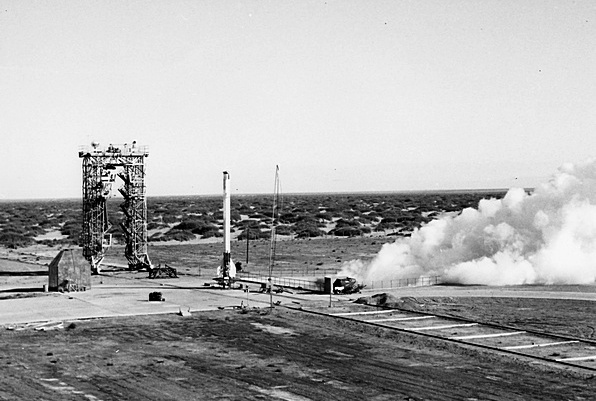
The engine was mounted on gymbals which were controlled by gyroscopes. By rapidly angling the engine exhaust away from the rocket’s centerline, the engine was able to stabilize the rocket. A British Pathé news film (available on YouTube) showing the launch of Viking 2 illustrates this:
¹ “Space” is defined as being above the von Kármán Line, the boundary between the Earth’s atmosphrere and outer space, at an altitude of 100 kilometers (62.14 miles)
© 2023, Bryan R. Swopes